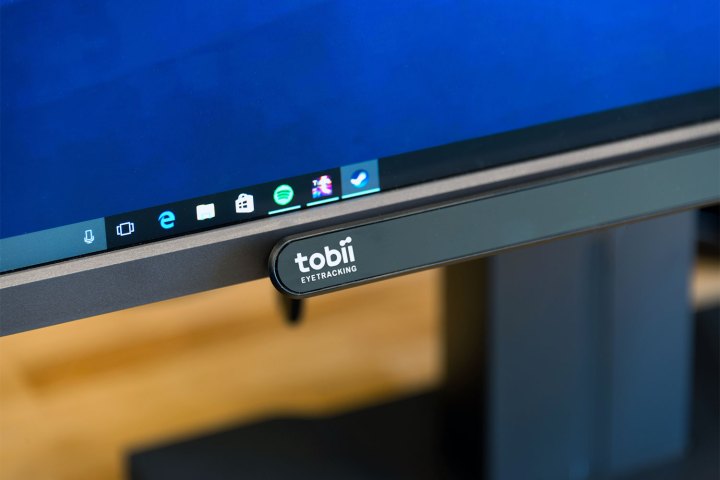
For the uninitiated, Tobii’s eye-tracking system, currently in its sixth generation, relies on a custom-designed processor for dedicated processing. It crunches numbers generated by a proprietary EyeCore algorithm, which in turn draws data from an array of infrared illuminators that track a user’s head position, eye gaze, and movements. It’s impressively capable — Tobii’s sensors work regardless of physical attributes like glasses and contact lenses. And it supports features beyond basic biometrics, like Microsoft’s Windows Hello login.
“Founded over 15 years ago with the vision of an eye tracker in every computer, we’re very happy to bring our tech to a wider array of consumer markets and continue our position as the clear market leader,” Tobii president Oscar Werner said in a statement. “If 2016 was an indicator of the growing interest in eye tracking, it’s only the beginning.”
Computing
During a press event Tuesday, Acer announced the world’s first general-purpose laptop with integrated eye tracking: The Acer V 17 Nitro. It’s enabled, naturally, by Tobii’s technology, which delivers functionality like app switching and automatic scrolling. Another feature, “Touch at Gaze,” moves the mouse pointer in the direction of the users’ pupils.
Smartphones
In December, Huwei introduced the first smartphone to integrate Tobii’s eye-tracking technology: The HTC Magic. It leverage’s Tobii’s EyeCore algorithms and an infrared camera to track a the user’s “presence” and “attention” — Tobii sees the tech used to gain greater insight in user’s intentions in order to better accommodate their actions. To that end, the firm is “exploring additional applications and use cases for eye tracking in smartphones,” according to a press release.
PC Gaming
Video games have proven to be one of the most successful applications of Tobii’s eye-tracking tech, and at CES, the firm demoed two new additions to a growing roster: Rise of the Tomb Raider and Dying Light. The additions put the expanding library of Tobii-supported games at just over 45, a number which the company expects to grow to more than 100 by the end of next year.
The announcement follows on the heels of integrations earlier this year. Tobii announced support for Deus Ex: Mankind Divided and Tom Clancy’s The Division in January. And in November, Tobii teamed up with developer Ubisoft to provide eye-tracking support in Watch Dogs 2 and Steep on PC. In Watch Dogs 2, players can move in one direction using a controller or mouse-keyboard combo and look in another direction to interact with a hackable object, and in Steep, head-tracking provides gaze-enabled interactions.
Tobii’s sensors are available in a growing number of gaming form factors, the company reiterated. They’re available as stand-alone peripherals in the EyeX, Eye Tracker 4C, and SteelSeries Sentry; in gaming notebooks like the Alienware 17, Predator 21X, and MSI GT72; and in monitors such as the Predator Z271T, XB251HQT, and XB271HUT.
Virtual Reality
Eye tracking’s serious business in the virtual reality realm. Facebook recently acquired iris-tracking specialists The Eye Tribe. Google purchased EyeFluence. And FOVE, a VR headset with eye-tracking tech, went on sale earlier this year.
A lot of the rush has to do with foveated rendering, a relatively new rendering technique that promises to reduce the processing power required for VR experiences. Instead of generating the entire environment surrounding the headset wearer, foveated rendering engines generate only visible elements — determined, of course, by the tracked direction of the wearer’s gaze.
Tobii didn’t have any concrete news to share on that front, but said it has an “in-house VR R&D team” hard at work on future products. In late December, the company announced plans to invested $50 million in its own large-scale VR and smartphone initiatives.
“With over eight years of wearable eye tracking expertise […] and the world’s largest eye-tracking patent portfolio, Tobii has both the technological acumen and operational flexibility to deliver industry leading innovations for VR,” a company spokesperson said.


